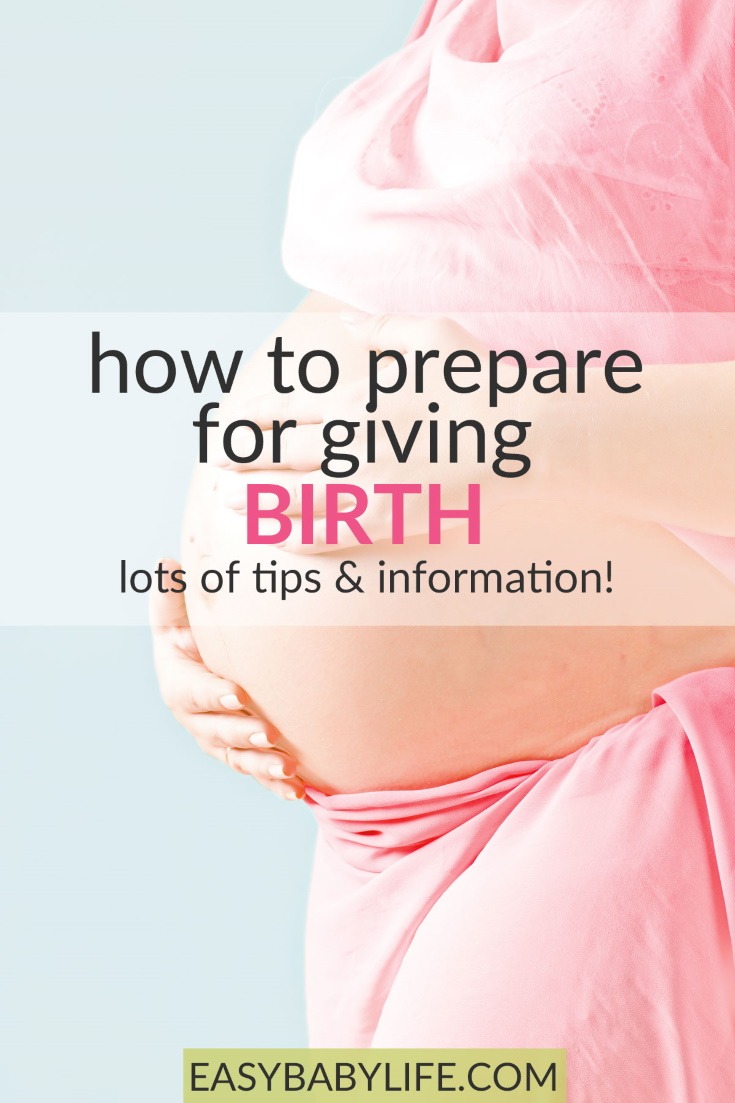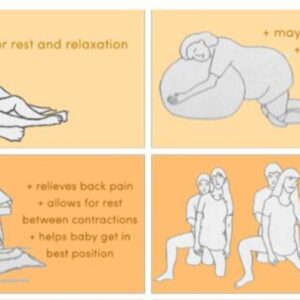
How can you ever really prepare for giving birth for the first time..? I mean, it may seem hopeless to prepare for something you’ve never experienced. And something that can become quite dramatic.
Well, there is a big difference between preparing to give birth and exactly planning the birth. Planning can’t really be done (at least not for how a vaginal birth will proceed), but preparing can definitely be done!
Being pregnant – or even just being a woman – the thought of giving birth can be exciting and scary. The first time I was pregnant, I worried quite a bit both about the pain and the risk that something would go terribly wrong (like me or the baby dying…).
And the worrying one reason why it is so important to prepare for giving birth!
For various reasons, I ended up spending the last three months of my first pregnancy in bed. So I had plenty of time to read about the signs of labor, the stages of labor, the pain, and pain relief. And I sure had a lot of time practicing breathing and relaxation!
Actually, I had trained Lamaze breathing so much that I actually thought I would be one of those women experiencing painless childbirth… Ha ha! But breathing and relaxation did help me a lot! Definitely!
No matter what your thoughts are about giving birth, learning and preparing are always good! (Not only with your first child but every time.)
Here are things you can do to give yourself the best possible preparation for giving birth.
Tips On How to Prepare For Giving Birth
- Educate yourself
- Write a birth plan
- Attend a childbirth class
- Learn breathing and relaxation
- Try prenatal yoga
- Birth positions
- Home birth or hospital birth
- Prepare for the unexpected
Educate yourself
If you’re not yet fully aware of what actually happens in your body when you give birth, make sure you learn. Understanding the different stages of labor, what happens and why it hurts, can be very helpful to prevent becoming scared when the pain sets in for example.
Also, while deciding beforehand what pain relief you want is really hard, at least the first time, knowing the options and the pros and cons is very good. That way you can talk to the midwife and decide together once you’re in labor.
And then how do you know if you actually are in labor? Find the most common (and some unusual) signs of labor here.
To learn about medically induced labor, click here. And you will find ways to induce labor naturally here, including tips from other moms.
You might also want to read up on cesarean risks if you are one of all the pregnant moms considering elected c-section to avoid the pain and risk or vaginal birth.
Write a birth plan
A birth plan may seem really stupid – how can you plan childbirth!? But this is actually quite a good way to prepare for giving birth!
Well, you can’t really plan, but you can think through what kind of help you think you will want (cheering, instructions, pain relief, etc) and you can also communicate any particular worries that you may have. This way it will be easier for the midwife as well as your spouse or any other people that are there to support you, to know how to help you the most.
I can almost guarantee that your birth will not follow your plan, but that doesn’t really matter!
You’ll find a guide to writing a birthing plan here, as well as a template to download.
Attend a childbirth class
Make sure you attend a childbirth class and bring your spouse along! In these classes, it is often well explained how birth actually happens, when you should call your midwife, pain relief and much more.
Understanding the process is a very important part of preparing for giving birth, and will most likely take some of your worryings away.
Learn breathing and relaxation
Breathing and relaxation are fantastic ways to be able to stay on top of the whole birthing and pain. Buy a book or attend a class or do both.
It wasn’t until giving birth the second time that I prepared by taking a breathing class together with my husband. It was a wonderful thing to do together! And even if he was a great help during my first childbirth, the second time I was giving birth, he was simply fantastic! Then he had a lot more tools to help me.
So grab your spouse along (or whoever you plan to bring with you when you give birth.)
Try prenatal yoga
Prenatal yoga can be used instead of or in addition to learning breathing techniques.
Prenatal yoga may not only teach you breathing and relaxation but also strengthen and stretch some of the muscles useful for giving birth. Highly recommended!
There’s even research confirming the benefits of prenatal yoga. As can be read in this article, some of the positive effects of prenatal yoga seem to be:
1) Reduced pelvic pain
2) Reduced stress, anxiety, and even depression,
3) Less physical pain during delivery
4) Improved perinatal outcomes (such as fewer obstetrical complications, improved delivery time, etc.)
Quite impressive, right?!
You can either attend a class or work in front of a DVD or even youtube at home. Or do both… To get started, check out these free video clips on prenatal yoga poses that I have gathered for you.
And here is a good online class to check out!
Birth positions
There are many more different positions for giving birth in addition to the traditional lying-on-your-back-so-that-the-doctor-has-a-good-view. Actually, that is probably one of the worst positions for a smooth ride through labor and delivery.
You can stand on your knees, lie on your side, sit on a birthing stool, rest in the water, walk around (well, not the whole time, maybe) and more. Most important is that you can relax in whatever position you choose at each moment and feel as comfortable as possible.
It might not be so easy to imagine different possible positions, so one important way to prepare for giving birth is to read about different birth positions, as well as looking at pictures or videos.
Learn more about birth positions here.
For some childbirth videos showing alternatives to traditional birthing, click here.
Home birth or hospital birth
In some cultures, home birth is common and natural; in others, it is almost unheard of. If you do want to consider a home birth you need to prepare for it:
- Make sure you will get help from an experienced midwife, who is also experienced with home births.
- Have her or him visit your home in advance and discuss the best routines for your childbirth.
- Educate yourself properly about labor and delivery as well as about postnatal care.
- A doula might be a good option too.
- Also, make sure you have a plan for adverse events, such as if you will have to reach a hospital fast. Keep telephone numbers and contact persons available and visible close to your phone.
Prepare for the unexpected
Prepare yourself mentally that nothing will turn out exactly the way you think. Well, of course, most likely, you will, after some 8-24 hours hold your baby in your arms and basically forget the hard work and pain. But the road to get there…
This is the one situation you can’t control! And with the right preparation and support, this is completely fine!
Curious about how other moms experienced giving birth? Check out the birth stories shared by other moms here. (No dads yet…)
What are your thoughts about giving birth? And how do you prepare for giving birth? Feel free to share by leaving a comment below! :-)

Paula Dennholt founded Easy Baby Life in 2006 and has been a passionate parenting and pregnancy writer since then. Her parenting approach and writing are based on studies in cognitive-behavioral models and therapy for children and her experience as a mother and stepmother. Life as a parent has convinced her of how crucial it is to put relationships before rules. She strongly believes in positive parenting and a science-based approach.
Paula cooperates with a team of pediatricians who assist in reviewing and writing articles.







Thanks for the tip that having a doula is something to consider when it comes to home birth planning. A friend of mine is considering that option because her obstetrician doesn’t see any major complications on her pregnancy so far. It seems that her body is built perfectly to be able to have a natural birth.